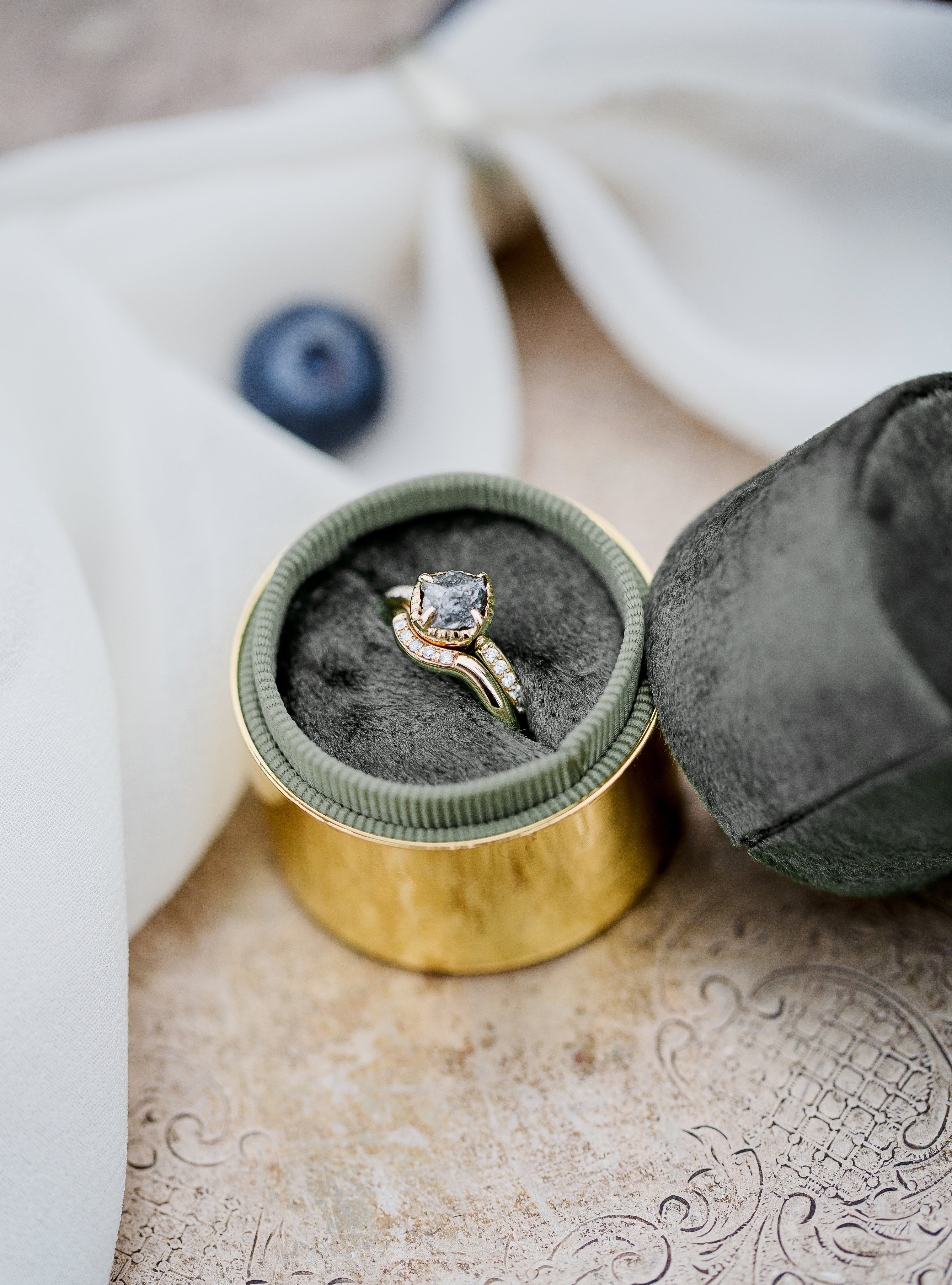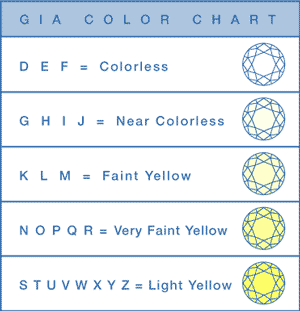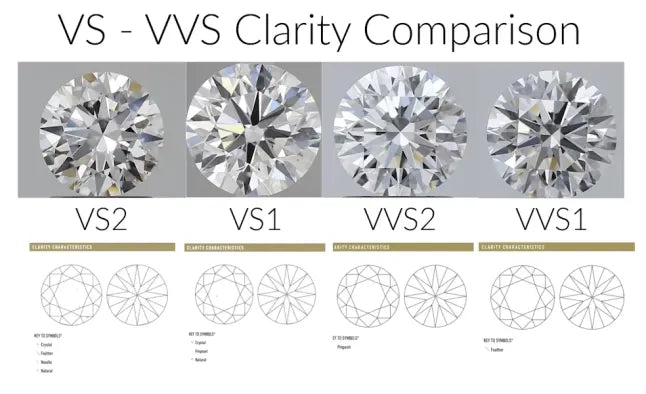Choosing a ring is a deeply personal journey, and the stone you select plays a pivotal role in its beauty, meaning, and value. Whether you're drawn to the classic sparkle of diamonds or the vibrant hues of gemstones, understanding the different stone types empowers you to make an informed decision that reflects your individual style and preferences.
Diamonds: The Timeless Classic

Diamonds have captivated hearts and minds for centuries, symbolizing enduring love, purity, and strength. Renowned for their exceptional brilliance and unparalleled hardness, diamonds are the most popular choice for engagement and wedding rings. When considering a diamond, it's essential to understand the "Four Cs":
- Carat: This refers to the diamond's weight. Larger diamonds tend to be more valuable, but cut, color, and clarity also significantly influence the price.
- Cut: The cut of a diamond dictates its brilliance and fire, affecting how light interacts with its facets. A well-cut diamond will sparkle intensely.
- Color: Diamonds are graded on a color scale, ranging from colorless (most desirable) to light yellow or brown. Colorless diamonds exhibit exceptional brilliance.
- Clarity: This refers to the presence of inclusions (internal flaws) and blemishes (external imperfections). Diamonds with fewer inclusions are generally more valuable.
To ensure you're getting a high-quality diamond, always request a diamond certificate from a reputable grading laboratory, such as GIA or IGI. This certificate provides an unbiased assessment of the diamond's characteristics.
Beyond the 4Cs: Diamond Shapes and Styles
Diamonds are available in a variety of shapes, each with its own unique charm. Popular shapes include:
- Round Brilliant: The most popular shape, known for its exceptional sparkle.
- Princess: A square or rectangular shape with a modern appeal.
- Emerald: A rectangular shape with stepped facets, offering a sophisticated look.
- Oval: An elongated shape that can make the finger appear longer.
- Pear: A teardrop shape with a romantic and elegant feel.
- Marquise: A pointed oval shape, known for its dramatic flair.
Diamonds can also be set in various styles, such as solitaire, halo, pave, and bezel settings. The setting you choose will impact the overall appearance of the ring and how the diamond is showcased.
Gemstones: A Spectrum of Colors and Symbolism

Gemstones offer a kaleidoscope of colors, each with its own unique beauty and symbolism. From the deep red of rubies to the serene blue of sapphires, gemstones allow you to express your individuality and create a ring that truly resonates with your personality.
Popular Gemstones for Rings:
- Sapphire: A symbol of wisdom, truth, and loyalty, sapphires are available in a range of colors, with blue being the most popular.
- Ruby: Representing passion, love, and courage, rubies are prized for their deep red hue.
- Emerald: Symbolizing hope, growth, and new beginnings, emeralds are known for their vibrant green color.
- Amethyst: Associated with peace, tranquility, and spiritual awareness, amethysts boast a beautiful purple hue.
- Aquamarine: Evoking the tranquility of the sea, aquamarines are known for their calming blue-green color.
- Garnet: Symbolizing passion, energy, and vitality, garnets come in a variety of colors, including red, green, and orange.
- Morganite: A delicate pink gemstone associated with love, compassion, and healing.
- Tanzanite: A rare gemstone with a captivating blue-violet color, symbolizing transformation and intuition.
Gemstone Durability and Care
Gemstones vary in terms of hardness and durability. While diamonds are the hardest known natural mineral, other gemstones may be more susceptible to scratches and damage. The Mohs Hardness Scale is used to measure a gemstone's resistance to scratching, with diamonds ranking 10 (the highest) and talc ranking 1 (the lowest).
When choosing a gemstone for your ring, consider your lifestyle and how often you'll be wearing the ring. For everyday wear, opt for gemstones with a Mohs hardness of 7 or higher. These include sapphires, rubies, and emeralds. Softer gemstones, like opals and pearls, require more delicate care and may be better suited for occasional wear.
Factors to Consider When Choosing a Ring Stone
Selecting the perfect ring stone is a significant decision. Here are some key factors to consider:
- Personal Style: Do you prefer classic or contemporary styles? Do you gravitate towards vibrant colors or understated elegance?
- Symbolism: Does the stone hold a special meaning for you? Certain gemstones are associated with specific months, anniversaries, or qualities.
- Durability: Consider your lifestyle and how often you'll be wearing the ring. Choose a stone that can withstand daily wear and tear.
- Budget: Set a realistic budget and explore the options available within your price range. Remember that the stone's size, cut, color, and clarity will influence its cost.
- Ethical Sourcing: Inquire about the origin of the stone and ensure it's ethically sourced, promoting fair labor practices and environmental responsibility.
Beyond Diamonds and Gemstones: Alternative Ring Stone Options
While diamonds and gemstones are the most popular choices for rings, there are other captivating options to consider:
Moissanite: A Sparkling Alternative

Moissanite is a gemstone with exceptional brilliance and fire, often mistaken for a diamond. It's composed of silicon carbide and is known for its durability and affordability. Moissanite is an excellent choice for those seeking a beautiful and ethical alternative to diamonds.
Lab-Grown Diamonds: Eco-Friendly and Ethical
Lab-grown diamonds are chemically and optically identical to natural diamonds, but they are created in a controlled laboratory environment. This process eliminates the environmental and ethical concerns associated with diamond mining. Lab-grown diamonds offer a sustainable and affordable option for those seeking the beauty of a diamond without compromising their values.
Caring for Your Ring Stone
Proper care will ensure your ring stone retains its beauty for years to come. Here are some essential tips:
- Regular Cleaning: Clean your ring regularly with a soft cloth and mild soap or a jewelry cleaning solution. Avoid harsh chemicals and abrasive cleaners.
- Professional Inspections: Have your ring inspected by a jeweler at least once a year to check for loose stones or any signs of damage.
- Proper Storage: Store your ring in a soft pouch or jewelry box when not in use to prevent scratches and tangles.
- Avoid Harsh Environments: Remove your ring before engaging in activities that could damage the stone, such as gardening, cleaning, or swimming.
Conclusion
Choosing the perfect ring stone is a journey of exploration and self-discovery. By understanding the different stone types, their characteristics, and their symbolism, you can make an informed decision that reflects your individual style and values. Whether you're captivated by the timeless elegance of diamonds, the vibrant hues of gemstones, or the ethical appeal of alternative options, your ring stone will serve as a lasting symbol of your love, commitment, or personal expression.






